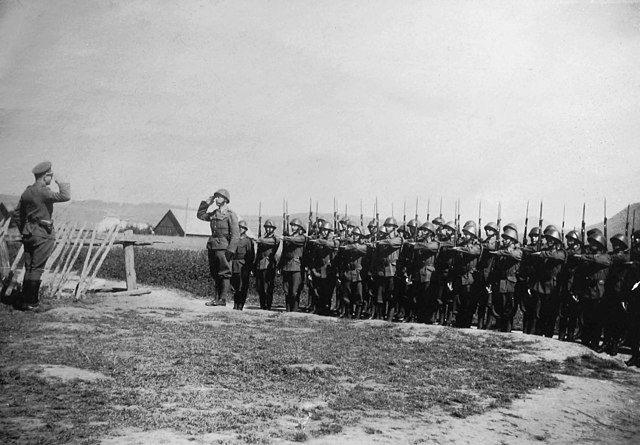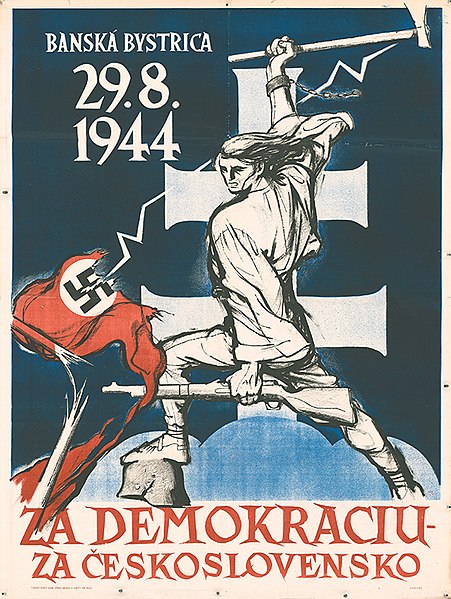The Slovak National Uprising was a military uprising organized by the Slovak resistance movement during World War II in central Slovakia. This resistance movement was represented mainly by members of the Democratic Party, social democrats, and communists. It was launched on 29 August 1944 from Banská Bystrica in an attempt to resist German troops that had occupied Slovak territory and to overthrow the collaborationist government of Jozef Tiso. Although the resistance was largely defeated by German forces, guerrilla operations continued until the Red Army, Czechoslovak Army and Romanian Army occupied the Slovak Republic in 1945.
Convoy of Slovak resistance army vehicles near Kelemeš (today part of Prešov)
Slovak mutineer forces in 1944
Pro-Slovak National Uprising propaganda, 1944
Ján Golian, one of the main organizers and commander of the rebel forces.
Slovak Republic (1939–1945)
The (First) Slovak Republic, otherwise known as the Slovak State, was a partially-recognized client state of Nazi Germany which existed between 14 March 1939 and 4 April 1945 in Central Europe. The Slovak part of Czechoslovakia declared independence with German support one day before the German occupation of Bohemia and Moravia. It controlled most of the territory of present day Slovakia, without its current southern parts, which were ceded by Czechoslovakia to Hungary in 1938. It was the first time in history that Slovakia had been a formally independent state. Bratislava was declared the capital city.
Vojtech Tuka served as prime minister and minister of Foreign Affairs of the First Slovak Republic
A Slovak-Nazi propaganda poster, "Our friendship is inseparable!", 1940
German Führer Adolf Hitler greeting president of the Slovak Republic Jozef Tiso, 1941
Commander of Hlinka Guard Interior Minister Alexander Mach and German Interior Minister Wilhelm Frick visit in Nazi Germany








